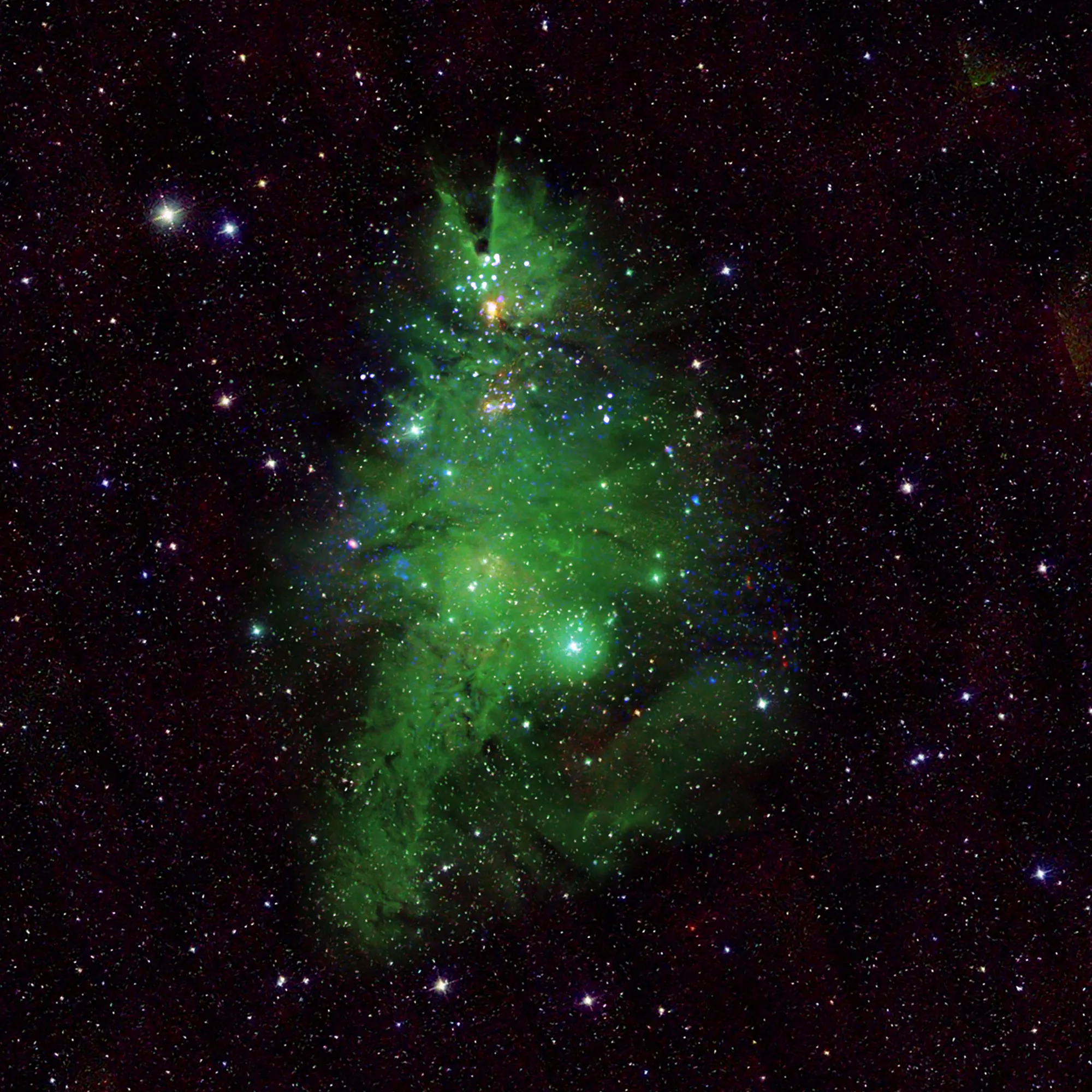Telescopes illuminate the “cluster of Christmas trees”
- December 19, 2023
- 0
This new image of NGC 2264, also known as the “Christmas Tree Cluster,” shows the shape of a cosmic tree glowing with starlight. NGC 2264 is actually a
This new image of NGC 2264, also known as the “Christmas Tree Cluster,” shows the shape of a cosmic tree glowing with starlight. NGC 2264 is actually a

This new image of NGC 2264, also known as the “Christmas Tree Cluster,” shows the shape of a cosmic tree glowing with starlight. NGC 2264 is actually a cluster of young stars ranging in age from one to five million in our Milky Way, about 2,500 light-years from Earth. The stars in NGC 2264 are both smaller and larger than the Sun; They start from a mass of less than one-tenth the mass of the sun; others contain about seven solar masses.
This new composite image reinforces the Christmas tree resemblance through color selection and rotation. The blue and white lights (blinking in the animated version of this image) are young stars emitting X-rays detected by NASA’s Chandra X-ray Observatory. Optical data from the National Science Foundation’s WIYN 0.9-meter telescope on Kitt Peak shows gas in the nebula in a green color corresponding to the “pine needles” of a tree, while infrared data from the Two Micron All-Sky Survey shows the nebula’s foreground and background It shows the stars. white. This image is rotated approximately 160 degrees clockwise from the astronomer’s north reference pointing upwards, so that the top of the tree appears to point toward the top of the image.
Young stars, such as those in NGC 2264, are unstable and subject to powerful X-ray bursts and other types of changes seen in different types of light. But the coordinated twinkle variations shown in this animation are artificial to highlight the position of the stars visible in the X-rays and to highlight this object’s resemblance to a Christmas tree. In fact, the changes of the stars are not synchronized.
The differences observed by Chandra and other telescopes arise from several different processes. Some of these are related to activity related to magnetic fields, including flares similar to those of the Sun but much more powerful, and hot spots and dark regions on the surface of stars that move in and out of view as the stars rotate. The thickness of the gas covering stars can also vary, and so can the amount of material that continues to fall onto stars from surrounding gas disks.
NASA’s Marshall Space Flight Center manages the Chandra program. The Smithsonian Astrophysical Observatory’s Chandra X-ray Center controls science operations in Cambridge, Massachusetts, and flights in Burlington, Massachusetts.
Source: Port Altele
As an experienced journalist and author, Mary has been reporting on the latest news and trends for over 5 years. With a passion for uncovering the stories behind the headlines, Mary has earned a reputation as a trusted voice in the world of journalism. Her writing style is insightful, engaging and thought-provoking, as she takes a deep dive into the most pressing issues of our time.